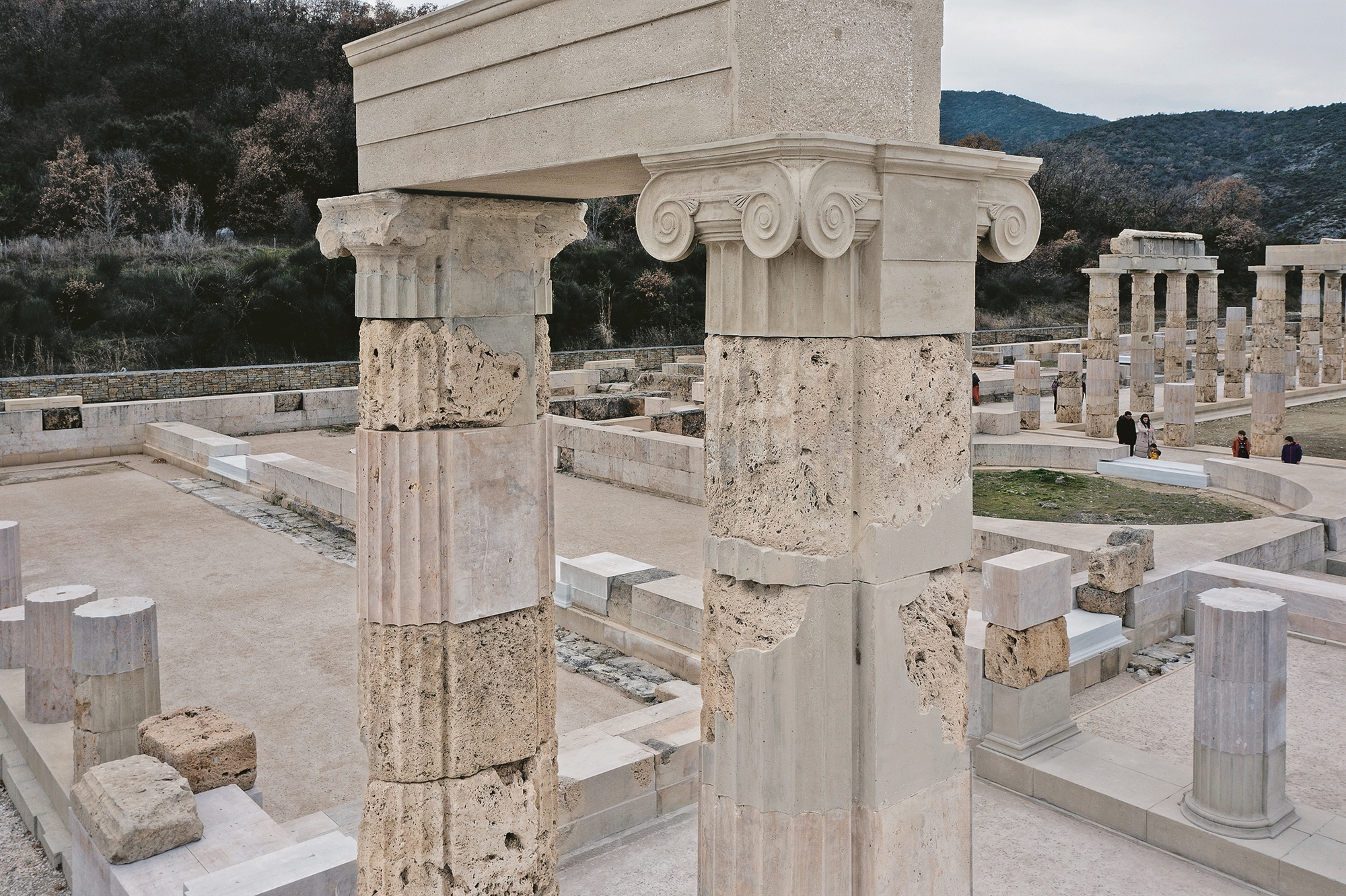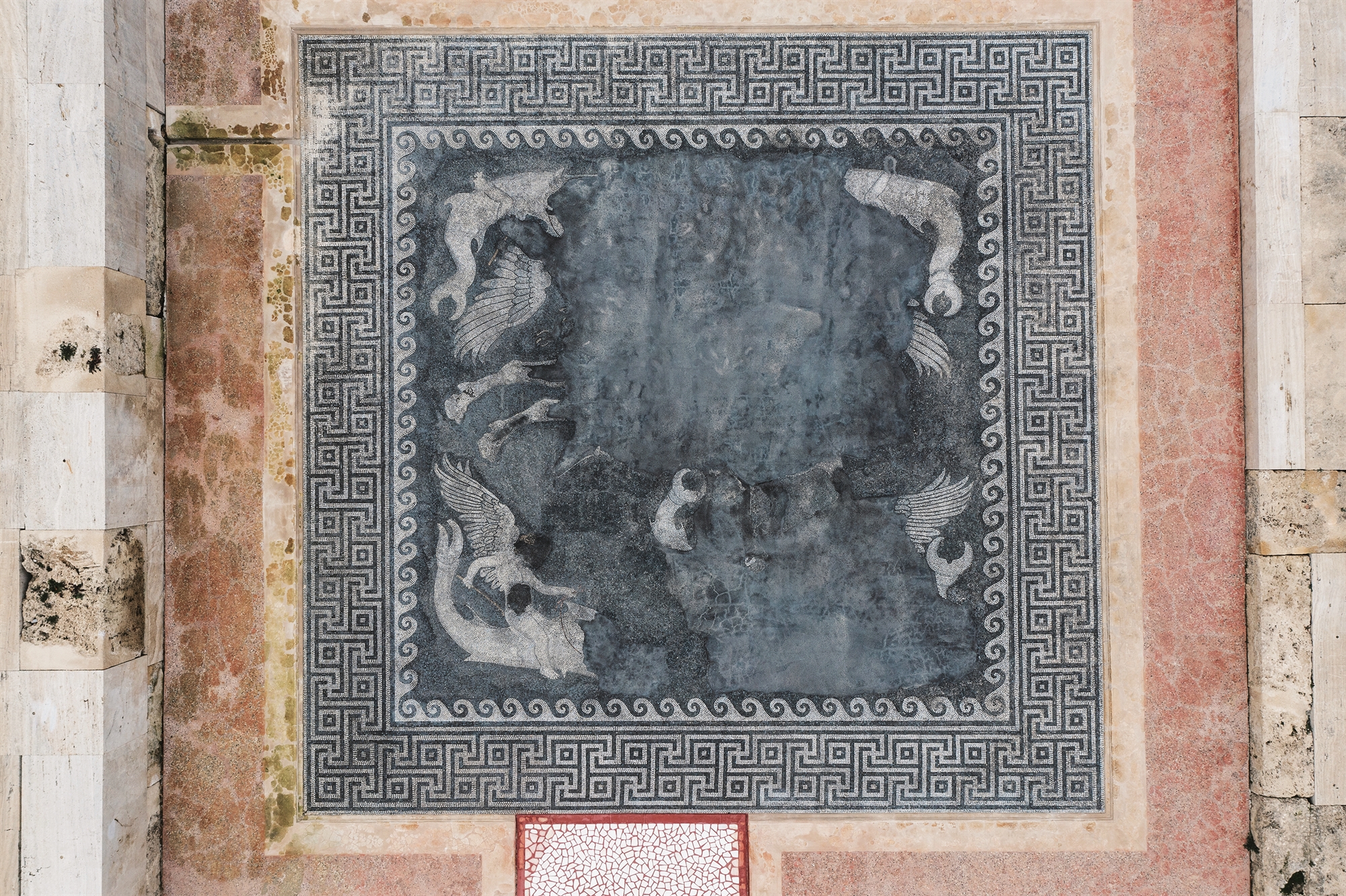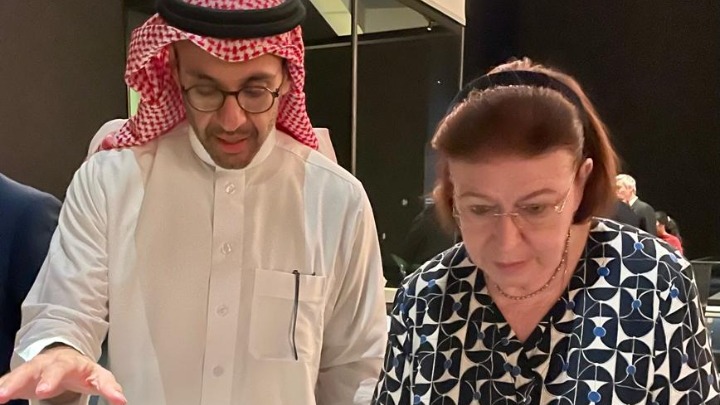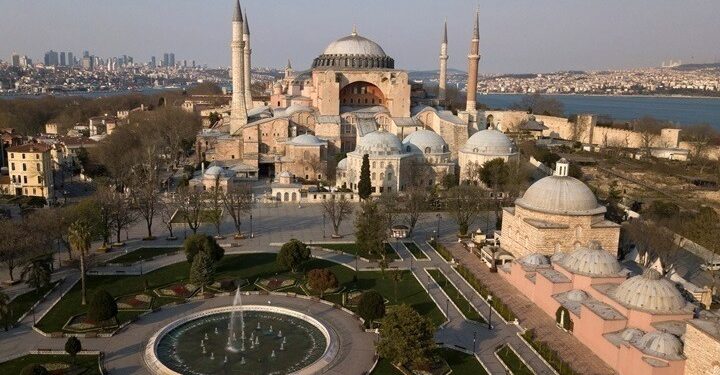Exploring the ‘Parthenon’ of the Macedonians

Kathimerini takes a tour of the restored palace of Philip II at Aigai, in northern Greece, which reopened its doors just last month
It is midday as we ascend beneath a cloud-dotted sky to the “kingdom” of Philip II, the 4th century BC king of the Macedonians and father of Alexander the Great.
The dirt path leading from the outskirts of the town of Vergina in northern Greece to the plateau where Philip established the seat of his kingdom little prepares us for the sight of the stunning palace. Aigai is no longer just the royal tombs of Vergina; it is also the place that, thanks to Philip, urbanized the mountain folk of Macedonia, as Angeliki Kottaridi – the honorary ephor of antiquities for the region of Imathia, who dedicated her career to bringing Aigai’s splendor to the fore – likes to say. We find ourselves at the palace’s eastern entrance, observing the two columns of the propylaion. Made of porous limestone, they have not stood the test of time well, but they have been repaired, only where necessary, in a dialogue between the new and the old that carries on around the restored monument.
“It was very much a Maximos Mansion of its time,” our guide, archaeologist Eva Kontogoulidou, says, referring to the official prime minister’s residence in Athens to explain that the palace was not just Philip’s home, but also a public administration center.
“The kings of Macedonia were also high priests, and every morning Philip would make libations to ‘Heracles the ancestor,’ from whom they believed they derived their mythical provenance,” she adds, pointing to the circular shrine (tholos) dedicated to the mythic hero.
We try to imagine Philip striding through massive doors made of oak or chestnut to meet with the citizens in the 13-meter-high porticos (stoas). The ground floor of the southern portico served as the court and was also where laws and decrees were displayed for the public, while the northern portico was for philosophical discussions, music performances and other intellectual pursuits.

From the discovery of dozens of reclining couches, it appears that the Macedonian king was able to host as many as 270 guests at his symposiums, while some 8,000 people were able to gather in the roughly 4,000-square meter peristyle courtyard. He also obviously spared no expense in the palace’s construction, most likely commissioning the services of the renowned architect Pytheus of Priene. The complex was equipped with the most advanced water and sewerage systems of the time, and its floors were made of intricate mosaics that were reinforced with waterproof mortar against the damp. As we cross the restored red pebbled mosaics, we stop at two impressive pieces adorning adjoining rooms. One features a popular floral motif, but the other, which survives only in fragments, depicts the abduction of Europa by Zeus, a reference, says Kottaridi, to Philip’s European aspirations.
The palace was part of an ambitious construction plan launched by Philip, and the location he picked was ideal, with the Acropolis of Aigai perched above it and the theater and the ancient city’s sanctuaries below, and the necropolis a short distance away. From its northern section – whose restoration is imminent – the palace overlooked the Macedonian Plain, Pella and, weather permitting, Mount Hortiatis.
We try to imagine Philip striding through massive doors made of oak or chestnut to meet with the citizens among the 13-meter-high porticos
Politically, “Philip encouraged the citizens’ involvement. They had something similar to a parliament and a municipal council. Decisions were made jointly,” says Kottaridi. “By establishing the pezhetairoi [‘foot companions’] corps, he essentially made all citizens ‘friends’ of the ruler,” she adds.
“The Parthenon of Macedonia,” as German scholar Wolfram Hefner described the palace, stood out from the Athenian citadel in this respect, according to the archaeologist. “The Parthenon was created for the goddess Athena, but the citizens could not actually use it, only admire it. Here, the ‘kingdom’ was used, the Macedons were civically engaged, they participated in culture and politics.”
Our tour takes us into the center of the monument, where we examine the form of the palace’s famous peristyle, or inner public square, the first of its kind in Greek architecture, according to Kottaridi. Sixteen columns have reclaimed their position on the southern flank of the square, centuries after the Romans and a landslide destroyed the building.
The dirt we are walking on is the same dirt once trod by Alexander after he was proclaimed king following his father’s assassination in 336 BC, which happened just a few meters away, near the ancient theater. According to the ancient historian Arrian of Nicomedia, when Philip died, Alexander’s friend and namesake Alexander of Lyncestis donned his breastplate and hastened to the “kingdom.”
“It was understood until recently that those who ran to the palace were seeking refuge because they believed it to be the house of the king. That is not so. They ran to get there first,” says Kottaridi.
New kings in Macedonia were declared verbally, which is why Kottaridi believes that Alexander the Great’s friends tried to get from the theater to the peristyle – the political and sacred agora where the new king had to be proclaimed – before the conspirators who most likely wanted to proclaim Alexander’s cousin, Amyntas, the new king.
‘More flexibility’
The palace was discovered and excavated in 1861 by French archaeologist Leon Heuzey, who took a few pieces from it as he left – they are now on display at the Louvre in Paris – while a lot of material was also removed later and used in the construction of churches and homes in the area. Excavations resumed in the 1930s and continued systematically until the 1960s, with the arduous task of restoration beginning in 2007 and reaching a point where the site could be opened to the public in full just recently. The 20.3-million-euro project was funded with European resources.
If the palace tells us who Philip was, what does it tell us about Alexander, we ask Kottaridi.
“Alexander took what his father did here, his vision, and transported it to the cities he established. Philip thought in a Balkan framework, whereas Alexander’s vision was global,” she says.

Source: ekathimerini.com




